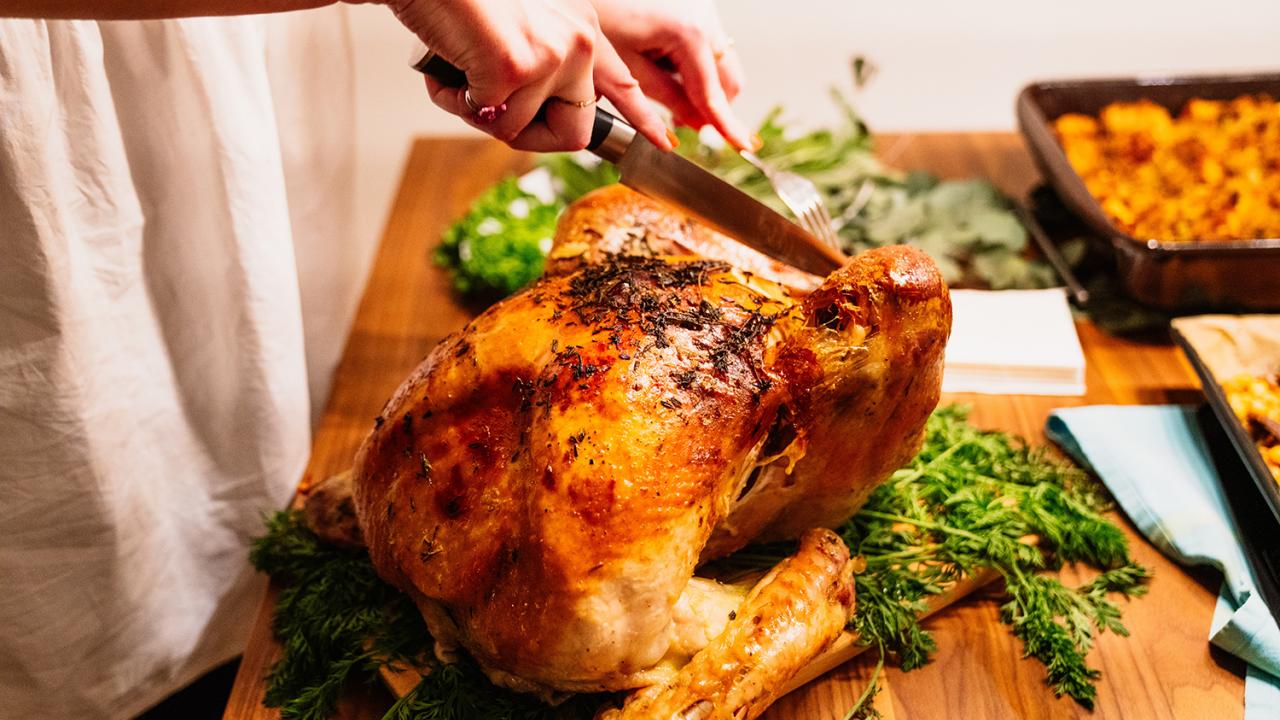
Holiday Cooking
November is the official start of the holiday season and the beginning of menu planning and preparations for holiday dinner of various sizes.
Whether hosting or attending, many holiday dishes are not intuitive to prepare. Food safety is an important key quality when meal planning, preparing, and storing all items on the menu and is crucial to remember both when initially cooking dishes as well as when re-heating to create leftover dishes!
Turkey is an excellent protein source and the staple of the Thanksgiving menu, but can be daunting to handle!
Safely Handling and Preparing a Turkey:
- The first step in the preparation process is allowing adequate time to let the turkey thaw. The thawing process is the common time that the turkey may enter the temperature danger zone. The temperature danger zone is the range of temperatures in which any bacteria that may have been present before freezing has the opportunity to grow and multiply rapidly. Always use a thermometer! The danger zone to avoid is between 40° and 140°F. There are multiple ways to thaw a turkey; however, remember to never thaw the turkey by leaving on the counter. The easiest thawing method is to move the turkey from the freezer to the refrigerator. Thawing times using the refrigerator vary depending on the size of the turkey:
- 4 – 12 pounds: 1 – 3 days
- 12 – 16 pounds: 3 – 4 days
- 16 – 20 pounds: 4 – 5 days
- 20 – 24 pounds: 5 – 6 days
- The second step in the process is preparing the kitchen to safely handle the turkey. Make sure to wash hands for 20 seconds! Best practice is to sing ‘happy birthday’ to ensure to prevent the spread of bacteria. Do not wash the turkey itself; this only promotes spread of bacteria from the turkey to kitchen surfaces and clothes! Cooking the turkey is the only way to kill the bacteria. Prepare the turkey separate from all other menu items. Before beginning to prepare the next dish, make sure to thoroughly clean the utensils, cutting boards and counters after handling the turkey.
- Allow time to prepare stuffing while the turkey thaws, as the third step is to stuff the turkey immediately before cooking. The stuffing should reach a minimum of 165°F at the center of the turkey. While the turkey may have reached the minimum 165°F, the stuffing could be contaminated with bacteria from the turkey and must reach this minimum temperature in order to safely consume. The only method to avoid the stuffing process is when planning to deep fry the turkey as the stuffing will not be able to meet the 165°F minimum.
- Finally, it is time to cook the turkey! Cooking times vary due to turkey size. To estimate, allow 2 hours to cook a 12 pound turkey and add an extra 15 minutes per pound for turkeys exceeding 12 pounds. Preheat the oven to 325°F and make sure to place the thawed turkey breast side up before roasting in a minimum 2 inch deep pan. For more detailed instructions, try out this beginner’s level turkey recipe.
- Remember to store your leftovers within 2 hours of serving the meal! Freeze any leftovers that have been in the refrigerator for 4 days!
Sources:
https://www.cdc.gov/features/turkeytime/index.html
https://www.realsimple.com/sites/default/files/kfield_turkey_chart.jpg